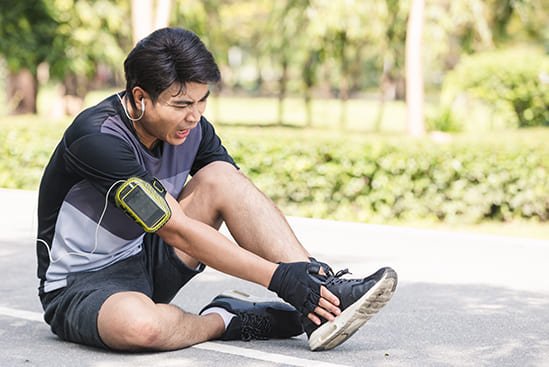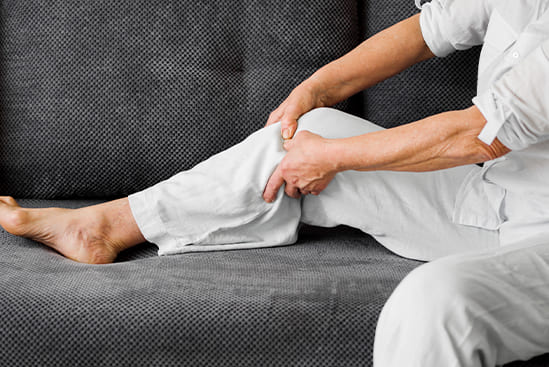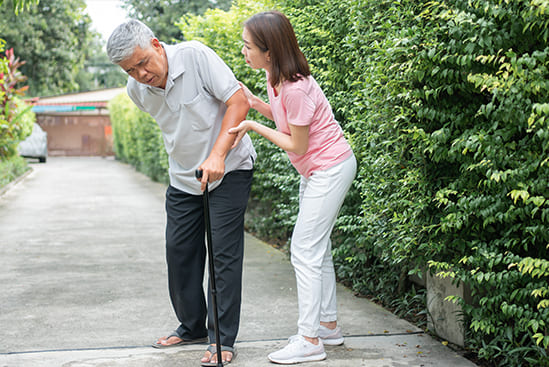
Sports Injuries
Introduction
Soccer, or football, is the world’s most popular team sport, played by two teams of 11 players, including one goalkeeper. Matches last 90 minutes, split into two 45-minute halves with a 15-minute halftime break. The objective is simple: outscore the opponent by getting the ball into their goal, using any part of the body except the arms and hands. The game is overseen by a referee, two linesmen, and a fourth official. Infractions such as fouls result in free kicks or penalties, while serious misconduct can lead to yellow or red cards, the latter ejecting a player from the match.
Due to its contact nature, soccer has a high incidence of injuries, especially among competitive and professional players. Most injuries involve the lower extremities, including the groin, knee, thigh, ankle, and foot. Given its global popularity and associated injury risk, soccer injuries have been extensively studied over the past two decades. Preventative recommendations, particularly for muscle strains and knee/ankle ligament injuries, have become a focal point in sports medicine.
For players seeking treatment and rehabilitation, a sports injury clinic can provide specialized care tailored to soccer-related injuries. These clinics often focus on preventative strategies and recovery protocols to help athletes return to the field safely and effectively.
Common Soccer Injuries
Soccer is physically demanding and carries risks of contact-related, slip, fall, and overuse injuries. Below are five common soccer injuries, along with their treatment and prevention strategies.
1. Hamstring Injuries
Hamstring injuries can result from overuse, undertraining, or acute trauma. Strength imbalances between eccentric and concentric movements often lead to pulls, particularly during quick deceleration. Risk factors include accidental contact, slips on wet grass, and muscle fatigue.
Treatment:
- RICE (rest, ice, compression, elevation) to reduce pain and swelling
- Manual therapy (massage, soft tissue mobilization) to promote healing
- Stretching and strengthening exercises to restore flexibility
- Progressive eccentric training to rebuild strength and prevent re-injury
Prevention:
- Proper warm-up before games
- Post-game stretching to maintain flexibility
- Eccentric strengthening to address muscle imbalances
- Fatigue management with adequate rest and recovery
2. Ankle Sprains
Ankle sprains are common in soccer due to running, sudden stops, and kicking. The anterior talofibular ligament is often sprained when the foot rolls outward, causing swelling and difficulty bearing weight.
Ankle Sprain Classification:
- Grade 1: Mild stretching and slight ligament damage
- Grade 2: Partial ligament tear with joint looseness
- Grade 3: Complete ligament tear
Treatment:
- RICE (rest, ice, compression, elevation) to reduce swelling and pain
- Bracing or taping for support
- Physical therapy to restore strength and mobility
- Progressive weight-bearing exercises for recovery
Prevention Strategies:
- Strengthening exercises for ankle stability
- Balance training to improve proprioception
- Proper footwear for support
- Taping or bracing during high-risk activities
3. Concussions
Head trauma is a concern in soccer, with players at risk of concussions from contact with the ground, other players, or, rarely, the ball. Concussions can lead to serious long-term complications. Symptoms include sensitivity to light, headaches, dizziness, and neck pain.
Treatment:
- Immediate removal from play to assess for concussion
- Rest and cognitive breaks to facilitate recovery
- Gradual return-to-play protocol, guided by a healthcare professional
- Symptom management with medication for pain or discomfort as needed
Prevention Strategies:
- Education on safe playing techniques and the importance of reporting symptoms
- Proper use of protective gear, like headgear designed for soccer
- Adherence to rules to minimize dangerous play
- Regular baseline assessments to monitor player health
4. Anterior Cruciate Ligament (ACL) Tears
Knee injuries are common in soccer due to the sport’s fast starts and stops. The most frequent injury is an anterior cruciate ligament (ACL) tear, which occurs when the leg is planted but the upper body continues moving.
Treatment:
- Rest and ice to reduce swelling and pain
- Physical therapy to restore strength and range of motion
- Bracing to stabilize the knee during recovery
- Surgery may be required for severe tears, followed by rehabilitation
Prevention Strategies:
- Strengthening exercises for the quadriceps, hamstrings, and core
- Balance and agility training to improve proprioception
- Proper warm-up routines to prepare muscles and joints
- Technique training to ensure safe movements
5. Wrist Sprains and Fractures
High-speed running, slipping, or being tripped can lead players to brace their fall with an outstretched hand, causing wrist sprains or fractures, commonly known as a “FOOSH” injury (fall on an outstretched hand).
Treatment:
- RICE (rest, ice, compression, elevation) to reduce swelling and pain
- Immobilization with a splint or brace during healing
- Pain management with over-the-counter medications
- Physical therapy to restore strength and range of motion
Prevention Strategies:
- Strengthening exercises for wrist and forearm muscles
- Balance and coordination training to reduce fall risk
- Proper footwear to improve traction
- Awareness and technique training to encourage safe playing practices
Enhancing Athletic Performance at Synapse Physiotherapy
At Synapse Physiotherapy, we provide a comprehensive approach to enhancing athletic performance through specialized services:
- Individualized Assessment
- Functional Movement Screening to identify weaknesses and imbalances.
- Baseline Testing to establish performance metrics.
- Tailored Rehabilitation Programs
- Personalized injury management and sports-specific exercises.
- Strength and Conditioning
- Eccentric and concentric training to improve strength and stability.
- Endurance and agility training to enhance fitness.
- Injury Prevention Strategies
- Education on common injuries and prehabilitation exercises.
- Manual Therapy Techniques
- Soft tissue and joint mobilization to alleviate tension and restore function.
- Biomechanical Analysis
- Gait and movement analysis to identify biomechanical issues.
- Custom foot orthotics for better alignment.
- Recovery Techniques
- Manual modalities to enhance recovery and reduce soreness.
- Education on the importance of rest and hydration.
Conclusion
Soccer is a thrilling yet physically demanding sport that carries a significant risk of injury. Understanding common injuries and implementing effective treatment and prevention strategies is essential for players at all levels. Synapse Physiotherapy is committed to enhancing athletic performance and minimizing injury risks through personalized care and evidence-based strategies. Whether recovering from an injury or aiming to boost performance, our expert team is here to help you achieve your goals safely and effectively.
Tags :

Back & Neck Pain
Conditions such as stiffness, postural abnormalities and muscle overuse from prolonged desk work at the office or home is more prevalent than most would think. We provide the necessary tools to fix you up and educate you on ergonomics which can unload unnecessary stress.
- Spine & Core Rehabilitation
- Strength & Conditioning Programme
- Pain Management
- Biomechanical Assessment
- Sports Physiotherapy
- Group Class

Sports Injuries
Rolled ankles, jarred knees, impinged shoulders are few conditions in the plethora of sports injuries which can hamper performance and limit our enjoyment of sports. Physiotherapy not only treats the symptoms of these conditions but propels your overall fitness to greater heights.
- Strength & Conditioning Programme
- Pain Management
- Biomechanical Assessment
- Sports Physiotherapy
- Shockwave Therapy
- Group Class

Work Desk Injuries
Conditions such as stiffness, postural abnormalities and muscle overuse from prolonged desk work at the office or home is more prevalent than most would think. We provide the necessary tools to fix you up and educate you on ergonomics which can unload unnecessary stress.

Pre-Post-Surgical Conditions
Surgery involves going through preparation both before and after. Physiotherapists play a vital role in getting your body ready for surgeries with circulatory, breathing and strengthening exercises. After the procedure, let us be there for your recovery and rehabilitation, taking it one step at a time.

Scoliosis & Postural Abnormalities
The way we stand, sit, walk and sleep has influence over our posture and the overall balance of muscles controlling its alignment. A comprehensive screening can be done by our physiotherapists to detect abnormalities, which we will aid in correcting.

Neurological Conditions
Neurological disabilities such as stroke, nerve compression and neuropathies can be barriers for patients to live life to its fullest. We at Synapse are committed to help you overcome these hurdles by ensuring functional mobility and quality of life is at its optimum by providing the right treatment and exercises.

Osteoarthritis & Rheumatism
Joint degeneration and inflammation happens as the human body grows older, but that does not mean our way of life degenerates as well. Relief your joint pains with a joint effort together with your physiotherapist, who will provide pain-relief treatments and prescribe exercises for your wellbeing.

Conditions Relating To Elderly
Common conditions in the older age population include hips & knee pain, back & neck pain, osteoarthritis, rheumatism, fear of falling and many more. Aging and degeneration of bodily function is inevitable, but here at Synapse, we will help you live the best of your life.

Home Physiotherapy
We understand that some conditions or injuries can make it difficult to receive rehabilitation at our clinic be it mobility or transportation issues. Our objective is to provide you with the same high-quality physiotherapy services at home that you would receive in-clinic.
